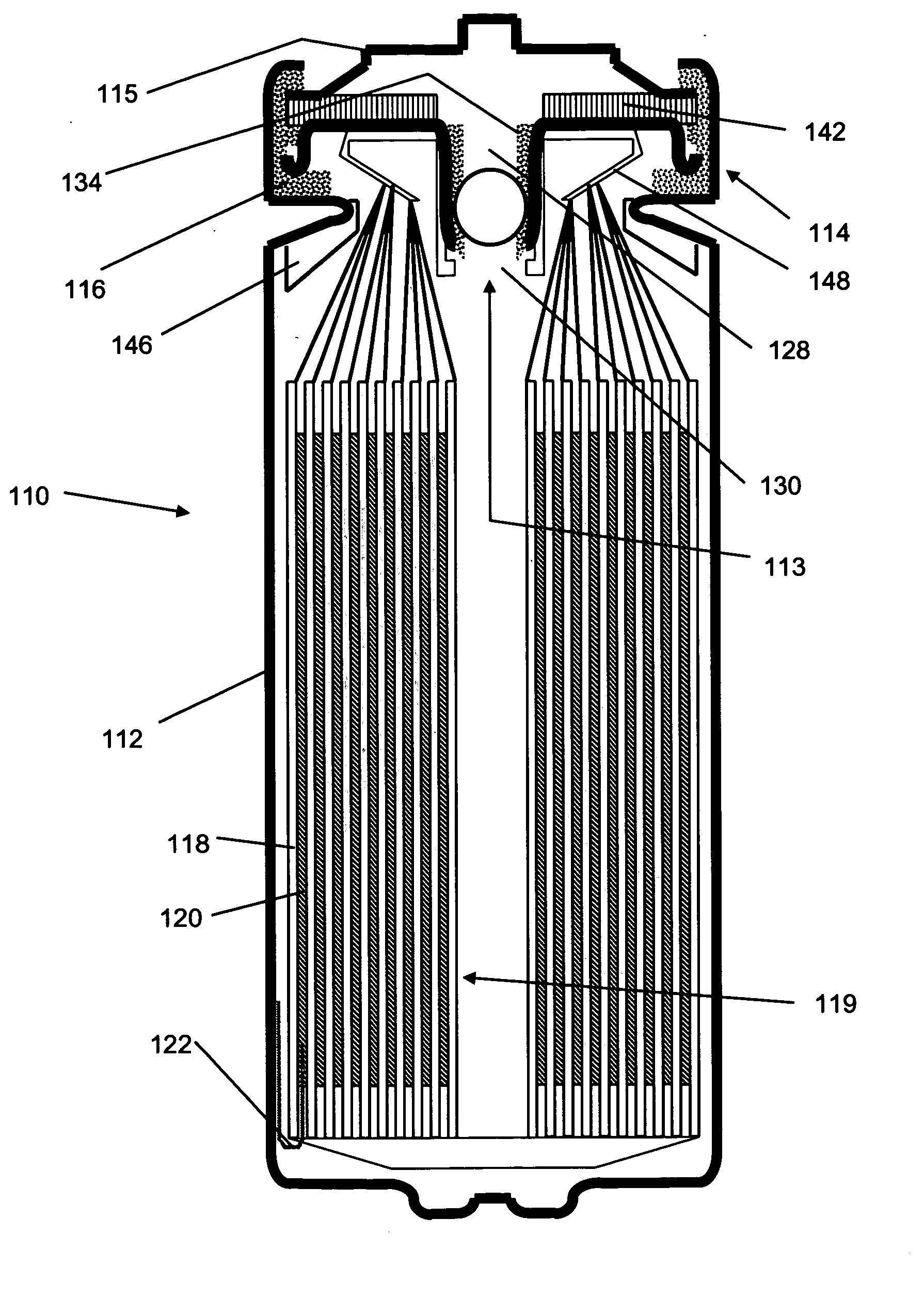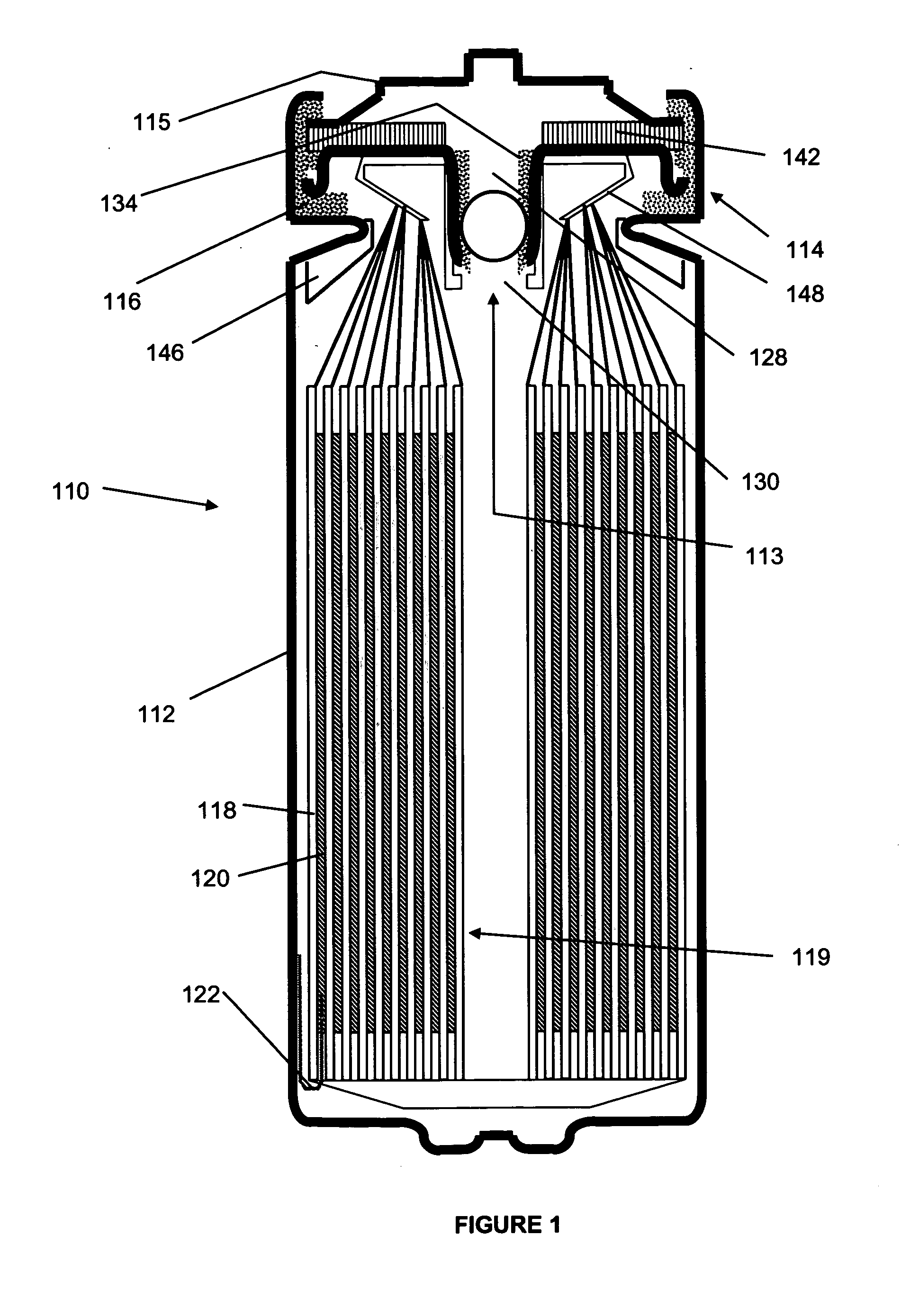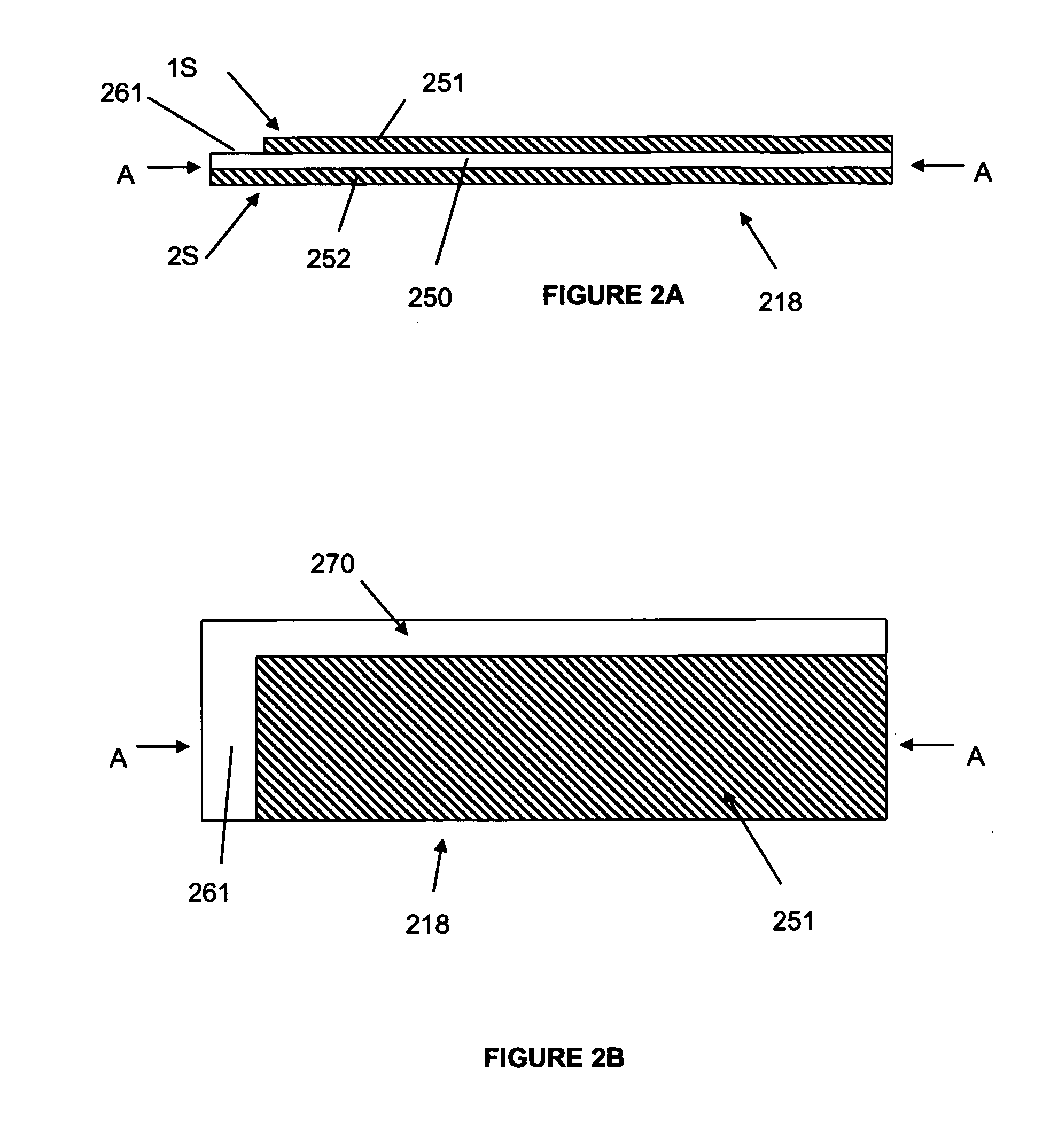Lithium-iron disulfide cylindrical cell with modified positive electrode
a positive electrode, lithium-iron disulfide technology, applied in the direction of non-aqueous electrolyte cells, cell components, sustainable manufacturing/processing, etc., can solve the problems of significant safety concerns, significantly higher costs and complexity of secondary cell design, and large differences in primary lithium cells and other problems, to achieve the effect of improving cell performance, optimizing active materials used, and increasing cell capacity
- Summary
- Abstract
- Description
- Claims
- Application Information
AI Technical Summary
Benefits of technology
Problems solved by technology
Method used
Image
Examples
example i
[0096]A first set of cells were constructed using standard “AA” sized cans and the most preferred materials identified above. In particular, the negative electrode having a thickness of 150 μm (about 6 mils), width of 39 mm and a length of 305.1 mm was provided. The positive electrode had the most preferred FeS2 mix deposited to a thickness of about 80 μm (3 mils) on either side of an aluminum foil. The final positive electrode had a width of 46.7 mm, including a 3.0 mm width uncoated axial edge, and a length of 328.7 mm, including an uncoated region having a length of 31.0 mm at the terminal longitudinal edge of only one interfacial side of the positive electrode (the second interfacial side being coated along its entire length, but again with the 3.0 mm uncoated axial edge). The two electrodes were spirally wound with a 404.2 length of the preferred separator and sealed along with the preferred electrolyte in a standard AA sized container according to the procedures described abov...
example ii
[0098]A set of AA sized (FR6) cells were constructed, again according to the principles described above and using the most preferred materials, along with a control. In this instance, the amount of alloyed lithium present in the control cell was 1.000 g, whereas the alloyed lithium in the experimental cells was varied as shown in Table 1b below. The lithium in the experimental cells was reduced by reducing the negative electrode length and reducing the positive electrode length accordingly to ensure the positive electrode did not overlap the negative electrode tab.
[0099]By providing an electrochemical cell with an electrode assembly as specified above, the quantity of lithium, can be reduced as compared to previously known cell designs, while at the same time increasing lithium utilization and unexpectedly increasing cell capacity. Notably, even if a fully coated, double-sided positive electrode were provided on the outermost circumference in place of lithium, the unreacted FeS2 wou...
PUM
| Property | Measurement | Unit |
|---|---|---|
| voltage | aaaaa | aaaaa |
| voltage | aaaaa | aaaaa |
| temperature | aaaaa | aaaaa |
Abstract
Description
Claims
Application Information
 Login to View More
Login to View More - R&D
- Intellectual Property
- Life Sciences
- Materials
- Tech Scout
- Unparalleled Data Quality
- Higher Quality Content
- 60% Fewer Hallucinations
Browse by: Latest US Patents, China's latest patents, Technical Efficacy Thesaurus, Application Domain, Technology Topic, Popular Technical Reports.
© 2025 PatSnap. All rights reserved.Legal|Privacy policy|Modern Slavery Act Transparency Statement|Sitemap|About US| Contact US: help@patsnap.com



